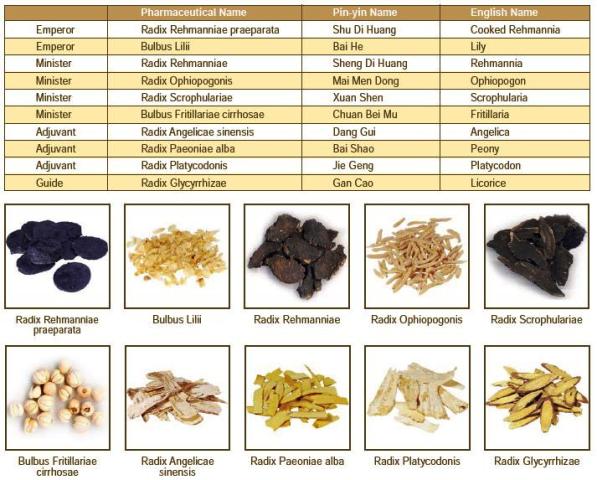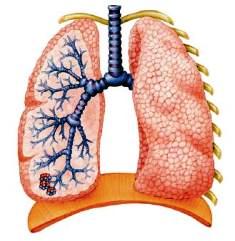Feature Formula - Lily Combination (Bai He Gu Jin Tang)
Feature Formula
Lily Combination (Bai He Gu Jin Tang)
Classic Literature Reference:
Collected Interpretations of Medical Prescriptions (Yi Fang Ji Jie, 1682).
Compiler: Ang Wang
Function:
Nourishes Yin, moistens the lungs, transforms phlegm, and stops cough.
Indications:
Traditional: Coughing with blood-streaked sputum, wheezing, a dry and sore throat, hot palms and soles, night sweats, a red tongue with little coating, and a thin, rapid pulse.
Modern:Pharyngitis, sore throat, hoarseness, hemoptysis, coughing, chronic bronchitis, wheezing,pulmonary tuberculosis, lung cancer, side effects of chemotherapy, bronchiectasis, spontaneous pneumothorax, and constipation.
Analysis of Formula:
Radix Rehmanniae praeparata (Shu Di Huang), one of the Emperor herbs in the formula, is a very powerful tonic for the liver and kidney Yin. In concert with Radix Rehmanniae (Sheng Di Huang), it is also especially helpful in treating fire due to Yin deficiency. The other Emperor herb, Bulbus Lilii (Bai He), moistens and nourishes dryness in the lungs, and clears heat.
Radix Rehmanniae (Sheng Di Huang), one of the Minister herb, strongly enriches the Yin and
tonifies the kidneys. It also performs the important function of cooling the blood to stop the
bleeding. Radix Ophiopogonis (Mai Men Dong), another Minister herb, is an important herb for
tonifying the Yin, especially that of the upper burner. It also potentiates the actions of Bulbus Lilii (Bai He) on the lungs, and the Yin-tonifying actions of the other Emperor herbs. Radix Scrophulariae (Xuan Shen), another Minister herb, helps the kidney water to ascend to the lungs, and is very useful in clearing fire from deficiency and treating steaming bone condition. The other Minister herb, Bulbus Fritillariae cirrhosae (Chuan Bei Mu), moistens the lungs, transforms phlegm, and stops coughing.
Radix Platycodonis (Jie Geng), one of the Adjuvant herbs, facilitates the movement of lung Qi and stops coughing, especially when combined with Bulbus Fritillariae cirrhosae (Chuan Bei Mu). The other Adjuvant herbs, Radix Angelicae sinensis (Dang Gui) and Radix Paeoniae alba (Bai Shao), nourish the blood to support the Yin. By calming the liver, they protect the lungs from violation. The Guide herb, Radix Glycyrrhizae (Gan Cao), harmonizes the actions of the other herbs. In combination with Radix Platycodonis (Jie Geng), it improves the condition of the throat.
Clinical Applications:
1. Radiation pneumonitis: Oral administration of this formula was effective in the treatment of 36 cases of radiation pneumonitis; therefore, it was recommended to cancer patients during radiation therapy.
2. Bronchiectasis: 50 cases of bronchiectasis were treated with this formula with the addition of Herba Agrimoniae (Xian He Cao) and Rhizoma Imperatae (Bai Mao Gen). Patients’ symptoms, such as hemoptysis, cough, phlegm, had remarkable improvements.
Cautions & Contraindications:

